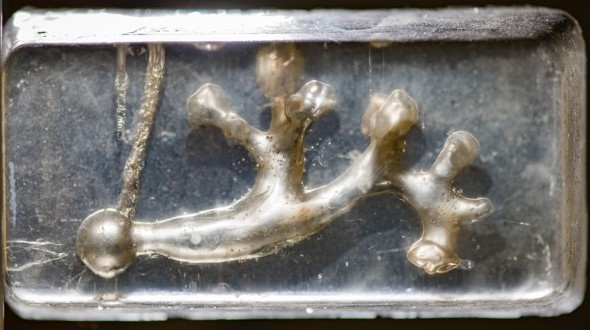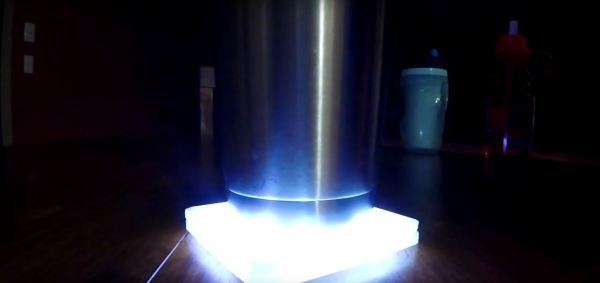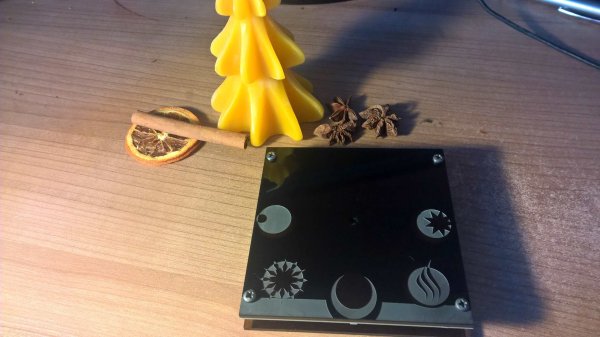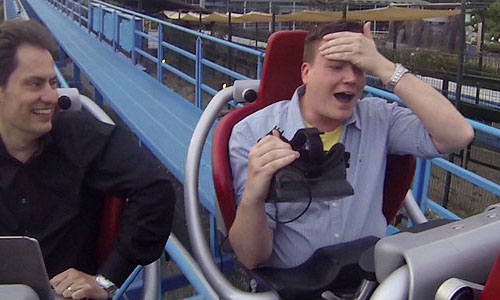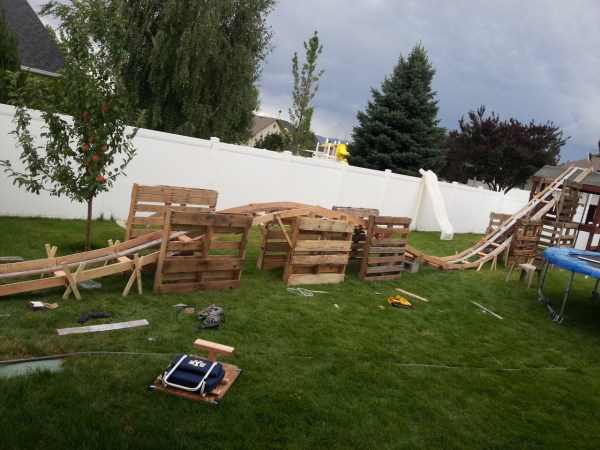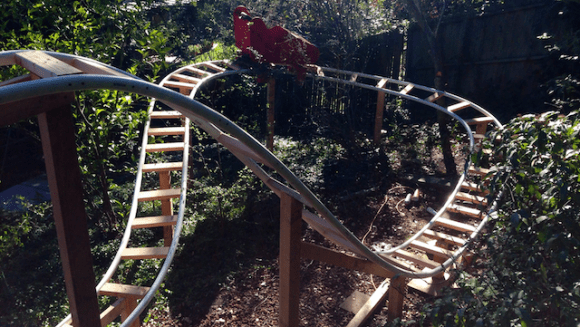
This week we have been in touch with [Will Pemble], Geek Dad. After a visit to Magic Mountain in early 2013, his son [Lyle] asked “Why don’t we build our own rollercoaster, Dad?”. [Will] couldn’t think of a single reason why not. This was the start of the CoasterDad Project. Excited by the challenge of building a Backyard Roller Coaster, [Will] also thought it would be a fantastic opportunity to teach [Lyle] about physics. Family, Fun, and Physics – what could be better?
The track is made from parallel PVC pipes on a lumber frame, similar to the one we saw for the Manpowered PVC rollercoaster, but it is more varied and looks a lot sturdier. [Will] is now working on mark II of the cart made from a steel frame with skateboard wheels and has independent axles. He is planning to add a pedal mechanism with freewheel, so you can get a little extra oomph on the rises.
In [Will’s] great videos you can get a front row seat on the coaster and see that even though it is fairly compact it has enough rises, troughs and turns to keep you entertained. It may not be quite as exciting as [Jon Iver’s] homemade rollercoaster, but when finished, the rider will be able go round and round self-propelled to their heart’s content, or till they puke, whichever comes first. [Will] also explains the theory and practicalities behind making a strong, safe, but really fun coaster. Don’t miss the videos after the fold.
Have you made a backyard roller coaster, or are thinking about building one? Have you got any questions about [Will’s] roller coaster build? He’s up for making a video to answer some of them, so please leave questions for him in the comments below. We will post the video later on.
Continue reading “Backyard Roller Coaster – Family, Physics And Fun” →

